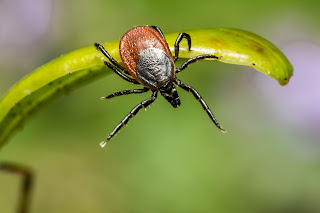Carpenter ants around even in winter why?
Carpenter ants why are they still around in the winter?
Are you seeing ants in your home? You're thinking, "Wait a minute, don't ants hibernate in the winter?" We understand. Ants appear to hibernate in the winter because they usually disappear in the winter until spring returns. But they don't. Ants aren't hibernating, but instead enter a low-energy state called diapason. They will enter this state if temperatures drop too low or if food resources are scarce. The big difference between hibernation and diapason is that a diapason animal will become active again when the unfavorable conditions have passed. Or they can not enter diapason and remain in tittivate during the winter if unfavorable conditions do not occur.
Carpenter ants are unique among ants because they chew wooden tunnels to create a safe place to establish their nests. And when they create these galleries in the wood of our homes, they can find favorable conditions all year round and remain active during the winter. This is bad news for any home that has been infested with carpenter ants because the longer these ants stay active in your home, the more damage they can do. And, over time, that damage can spread.
Carpenter Ants Detection
There are many ways to determine if your home has been infested with carpenter ants. The first and most obvious sign is the appearance of large black ants wandering around the house. You may see one on your kitchen counter. You may find one on a pantry shelf. But no matter where you find them, spotting even a single carpenter ant inside your home is an indication of an infestation, so don't brush this sign away.
Another warning sign that should be obvious but is often overlooked is the appearance of flying ants on our window panes. When flying ants start crawling on window panes and interior window sills, many homeowners suck them with vacuum and call it a day because they think those flying ants have flown in from outside their home. But it's important to understand that carpenter ants are attracted to light and don't prefer the dimmer interior lights in your home to the bright, sunny backyard that surrounds your home. So the appearance of flying carpenter ants inside a home is usually a sign of an established current infestation in the home rather than a '
When flying ants appear outside a house, this can also be a sign of a current infestation. In spring, reproductive carpenter ants emerge from their mature nests to mate and establish new nests. Swarms typically only last for about 30 minutes and don't travel far from their old nests. So if you find flying ants around your home or black ants crawling out of your home, it's time to call a professional.
Since these swarms of flying ants don't last long, you may not see those winged ants at all, you can only see the wings they leave behind. Shortly after swarming, these reproductive ones lose their wings. You may find them scattered on the ground, especially near wood sources. If only a few ants entered your yard from your neighbor's yard, you might not see any of these wings. When looking for these wings, a good place to check is in any cobweb on your property. These are nature's sticky traps. If you find wings or entire carpenters trapped in these nets or anywhere else on your property, you should consider investing in an inspection by a pesticide professional.
You'd think wood damage would be the first sign to look for in determining whether or not your home has been overrun with carpenter ants. This could be the case if these wood-destroying pests feed on wood. But these ants don't consume wood; they crawl into it to establish their nests inside. So the most damage you might see is where they chewed. Look for these holes in the bottom of the door frames and window frames. These are common spots that carpenter ants make their way into our homes as these areas usually have high levels of humidity. These harmful pests are attracted to areas of damp, water-damaged wood.
When carpenter ants walk through the woods, they have to do something with the sawdust they create since they don't eat it. To get rid of the sawdust in their tunnels, these ants push out small launch holes. If these ejection holes are created in visible locations in your home, you may be able to use them to detect an infestation in your home. But the droves generated by carpenter ants will be much more noticeable than those from launch holes. Look for this sawdust-like little phrase that clings to the wall under these holes, piled up on the floor, coming out of the gaps, or sticking to the rafters.
However, if this phrase is pushed out into the voids of your home where it cannot be seen or in a location that is difficult to access such as the crawl space under your home, it can remain hidden and allow carpenter ants to secretly continue damaging. Your house





Comments
Post a Comment